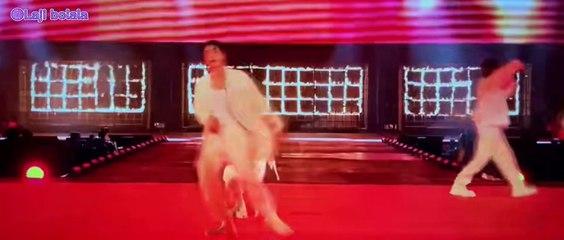Mozart’s Requiem Mass is a work with a mythic aura. The composer wrote it just months before he died, and it has since become the music of mourning par excellence. In this performance of the Requiem Mass in D minor, K. 626, conducted by Christoph Eschenbach, the Orchestre National du Capitole de Toulouse plays, the Choir Accentus sings, and the vocal soloists are Katharina Konradi (soprano), Stéphanie d'Oustrac (mezzo-soprano), Giovanni Sala (tenor) and Ildebrando d'Arcangelo (bass-baritone). The performance took place in 2023 in the Marcadieu Hall in Tarbes, France.
00:00 Applause
00:29 I. Introitus: Requiem aeternam
05:47 II. Kyrie
08:38 III. Sequentia: a. Dies irae
10:40 III. Sequentia: b. Tuba mirum
14:18 III. Sequentia: c. Rex tremendae
16:14 III. Sequentia: d. Recordare
22:07 III. Sequentia: e. Confutatis
24:44 III. Sequentia: f. Lacrimosa
28:58 IV. Offertorium: a. Domine Jesu
33:01 IV. Offertorium: b. Hostias
37:44 V. Sanctus
39:17 VI. Benedictus
44:32 VII. Agnus Dei
47:57 VIII. Communio: Lux aeterna
KATHARINA KONRADI | Soprano
STÉPHANIE D’OUSTRAC | Mezzo-soprano
GIOVANNI SALA | Tenor
ILDEBRANDO D’ARCANGELO | Bass-baritone
ORCHESTRE NATIONAL DU CAPITOLE DE TOULOUSE
CHOIR ACCENTUS
CHRISTOPH ESCHENBACH | Conductor
The Requiem Mass in D minor, K. 626 is the last composition that Wolfgang Amadeus Mozart (1756-1791) worked on. It was commissioned by Count Franz von Walsegg, but Mozart was unable to complete the requiem mass, as he died on December 5, 1791, after a short, serious illness. His widow, Constanze Mozart (1762-1842), commissioned his pupils Joseph Eybler (orchestration) and Franz Xaver Süssmayr (orchestration and completion or new composition of individual movements) to finish it. It is likely that other composers worked on the completion of the Mass for the Dead.
The premiere of the complete work took place on January 2, 1793, in Jahn's Hall in Vienna, where Mozart had performed as a pianist for the last time on March 4, 1791. It was organized by Mozart's patron Gottfried van Swieten as part of a benefit concert for Constanze Mozart and her children. It was not until December 14, 1793, that it was performed for the first time in the collegiate church of the Neukloster Abbey in Wiener Neustadt, which corresponded to the actual purpose of the work: as a Mass for the soul of the deceased Countess Walsegg.
The main key of the Requiem is D minor, the so-called “tragic” key, which was used by Mozart and other composers for subjects related to death and the afterlife. In the structure of the Requiem, Mozart and his pupils adhered to the usual textual form of a Requiem and merely refrained from setting the Gradual and Tractus to music, as is the case in most musical arrangements. An interesting effect is created by the instrumentation: the orchestra lacks the high woodwinds, and Mozart uses two basset horns instead. This has the effect of darkening the orchestral sound, creating a somber mood.
The Requiem has long conquered popular culture. Individual movements — especially the “Dies irae” and the “Lacrimosa” — have been used repeatedly in commercials and films, for example in “Eyes Wide Shut,” “The Big Lebowski” or “The Lion King,” and of course in the Mozart biopic “Amadeus.” The Requiem is also popular in the world of video games. It is one of the main themes in “Onimusha 3: Demon Siege” and is used in the trailer for “Command & Conquer 2.” There has also been a game for PlayStation, Nintendo Switch and PC called “Mozart Requiem” since 2022.
© 2023 EuroArts Music International
Watch more concerts in your personal concert hall:
https://www.youtube.com/playlist?list=PL_SdnzPd3eBV5A14dyRWy1KSkwcG8LEey
and in our Mozart playlist:
https://www.youtube.com/playlist?list=PL_SdnzPd3eBVMUV5tqlgIMa-NdrBs5qum
Subscribe to DW Classical Music:
https://www.youtube.com/dwclassicalmusic
#mozart #requiem #mozartrequiem
00:00 Applause
00:29 I. Introitus: Requiem aeternam
05:47 II. Kyrie
08:38 III. Sequentia: a. Dies irae
10:40 III. Sequentia: b. Tuba mirum
14:18 III. Sequentia: c. Rex tremendae
16:14 III. Sequentia: d. Recordare
22:07 III. Sequentia: e. Confutatis
24:44 III. Sequentia: f. Lacrimosa
28:58 IV. Offertorium: a. Domine Jesu
33:01 IV. Offertorium: b. Hostias
37:44 V. Sanctus
39:17 VI. Benedictus
44:32 VII. Agnus Dei
47:57 VIII. Communio: Lux aeterna
KATHARINA KONRADI | Soprano
STÉPHANIE D’OUSTRAC | Mezzo-soprano
GIOVANNI SALA | Tenor
ILDEBRANDO D’ARCANGELO | Bass-baritone
ORCHESTRE NATIONAL DU CAPITOLE DE TOULOUSE
CHOIR ACCENTUS
CHRISTOPH ESCHENBACH | Conductor
The Requiem Mass in D minor, K. 626 is the last composition that Wolfgang Amadeus Mozart (1756-1791) worked on. It was commissioned by Count Franz von Walsegg, but Mozart was unable to complete the requiem mass, as he died on December 5, 1791, after a short, serious illness. His widow, Constanze Mozart (1762-1842), commissioned his pupils Joseph Eybler (orchestration) and Franz Xaver Süssmayr (orchestration and completion or new composition of individual movements) to finish it. It is likely that other composers worked on the completion of the Mass for the Dead.
The premiere of the complete work took place on January 2, 1793, in Jahn's Hall in Vienna, where Mozart had performed as a pianist for the last time on March 4, 1791. It was organized by Mozart's patron Gottfried van Swieten as part of a benefit concert for Constanze Mozart and her children. It was not until December 14, 1793, that it was performed for the first time in the collegiate church of the Neukloster Abbey in Wiener Neustadt, which corresponded to the actual purpose of the work: as a Mass for the soul of the deceased Countess Walsegg.
The main key of the Requiem is D minor, the so-called “tragic” key, which was used by Mozart and other composers for subjects related to death and the afterlife. In the structure of the Requiem, Mozart and his pupils adhered to the usual textual form of a Requiem and merely refrained from setting the Gradual and Tractus to music, as is the case in most musical arrangements. An interesting effect is created by the instrumentation: the orchestra lacks the high woodwinds, and Mozart uses two basset horns instead. This has the effect of darkening the orchestral sound, creating a somber mood.
The Requiem has long conquered popular culture. Individual movements — especially the “Dies irae” and the “Lacrimosa” — have been used repeatedly in commercials and films, for example in “Eyes Wide Shut,” “The Big Lebowski” or “The Lion King,” and of course in the Mozart biopic “Amadeus.” The Requiem is also popular in the world of video games. It is one of the main themes in “Onimusha 3: Demon Siege” and is used in the trailer for “Command & Conquer 2.” There has also been a game for PlayStation, Nintendo Switch and PC called “Mozart Requiem” since 2022.
© 2023 EuroArts Music International
Watch more concerts in your personal concert hall:
https://www.youtube.com/playlist?list=PL_SdnzPd3eBV5A14dyRWy1KSkwcG8LEey
and in our Mozart playlist:
https://www.youtube.com/playlist?list=PL_SdnzPd3eBVMUV5tqlgIMa-NdrBs5qum
Subscribe to DW Classical Music:
https://www.youtube.com/dwclassicalmusic
#mozart #requiem #mozartrequiem
- Category
- Live Concert
- Tags
- church music, spiritual music, Mozart Requiem Dies Irae












Comments